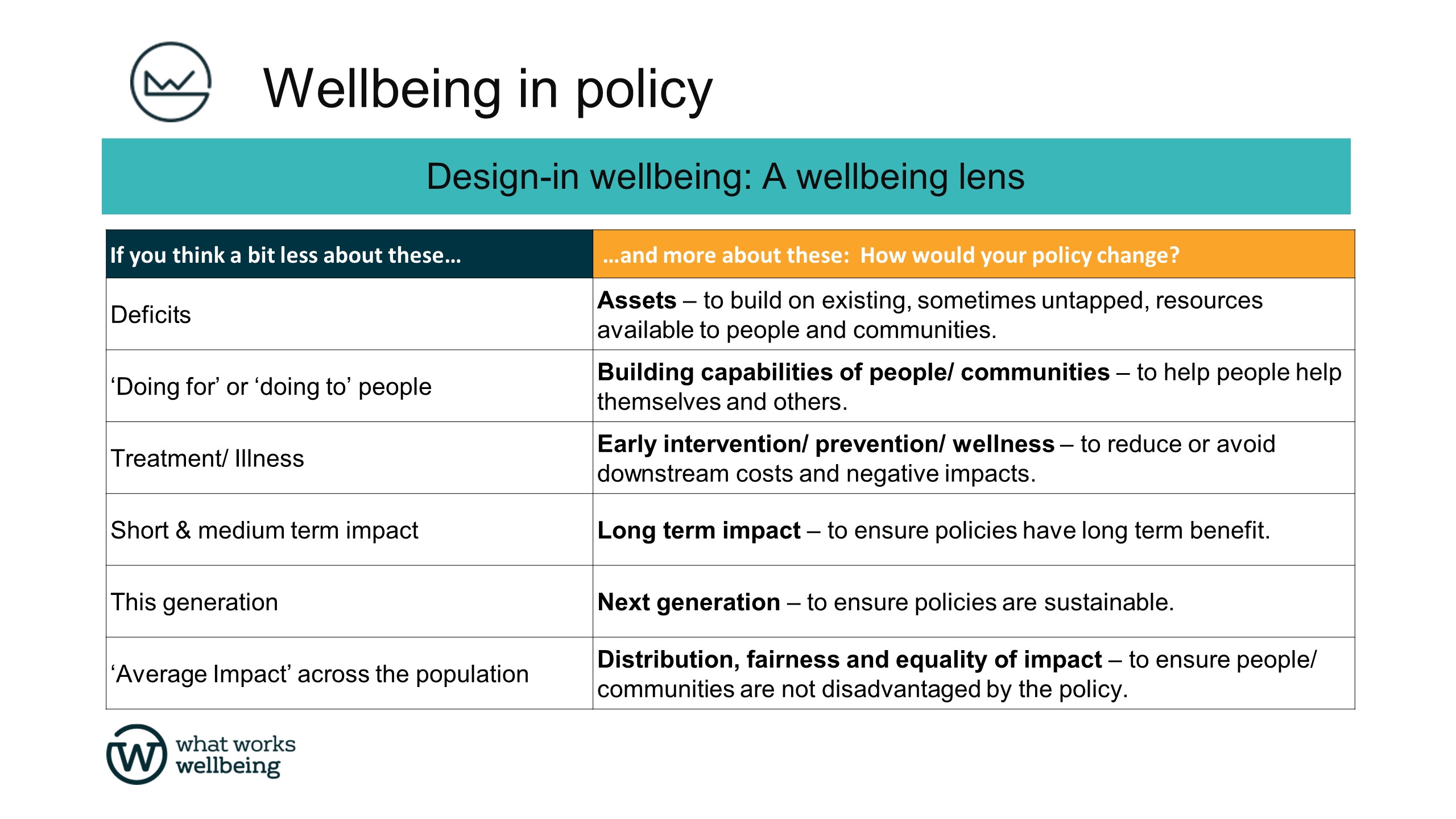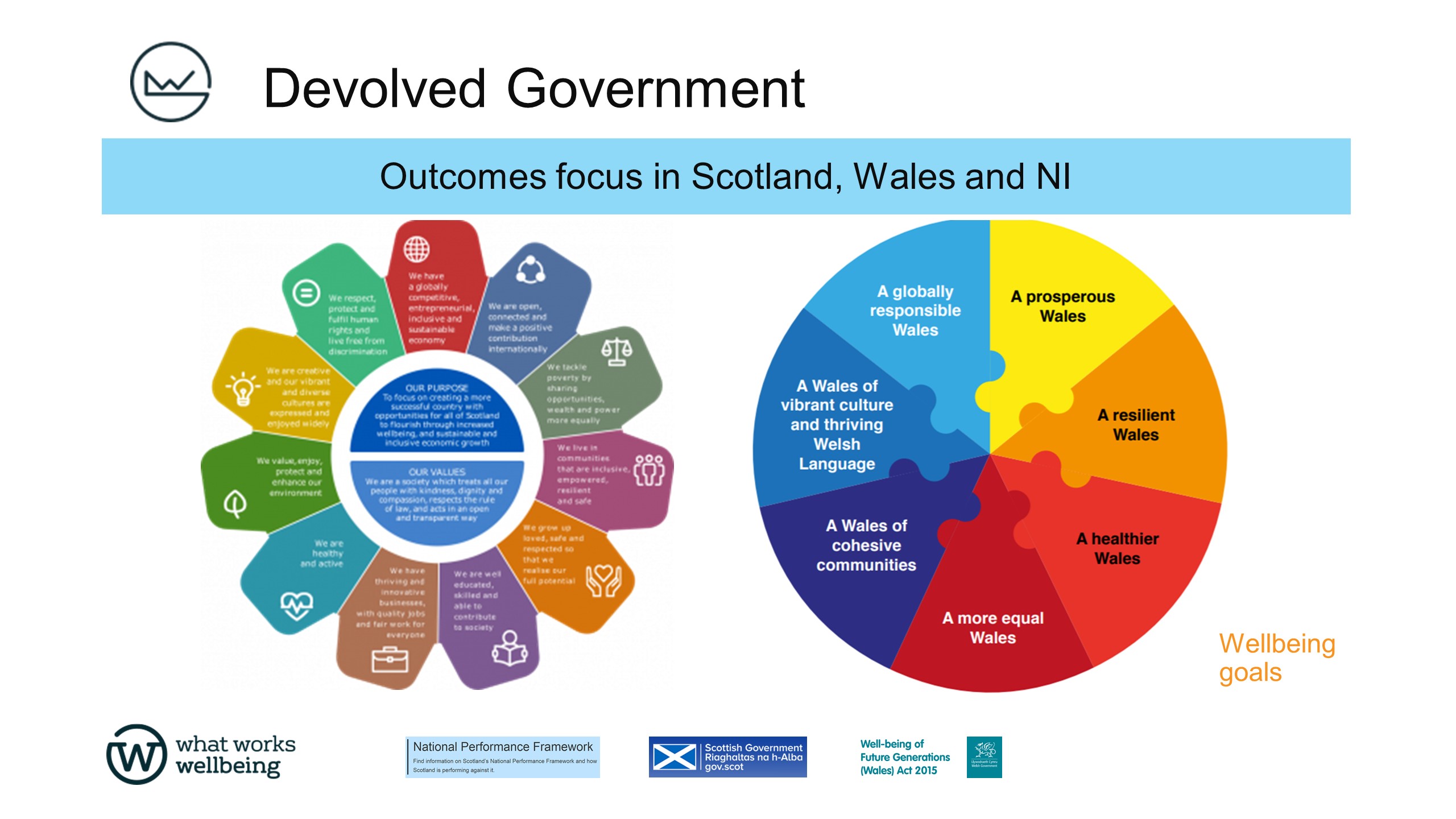How does the latest spending round move the UK closer towards a focus on improving wellbeing?
This week’s blog is from our Director, Nancy Hey, reflecting on key takeaways from last week’s Spending Round announced by the Chancellor. She discusses how wellbeing can be used as a measure for social progress, unpacking what’s important in our lives to thrive and the need of a shared evidence base for children and young people.
The 2019 spending round announced on the 4th September set out departmental spending plans for 2020-2021. The spending round is important to fix the total amount of spending that the Government decides it can afford for next year, which is a vital part of the Government’s economic management.
But these spending plans are also an opportunity for the Government to identify it’s approach and vision for the country and is likely to go on to inform the spending and investment priorities for the next multi-year Spending Review, which will be carried out in 2020. As such, there are some important messages we can take away from the announcement last week, which have implications for the government’s approach to investing in wellbeing in the UK.
Three key points from the Spending Round
- A shift to outcome measurement.
- What matters in our lives to thrive.
- Measurement of children and young people’s wellbeing in schools.
Somewhat surprisingly to those who associate wellbeing with a lovely spa holiday, many government finance ministries and statistical agencies understand wellbeing as social welfare, social value or more simply ‘how we are doing’. At one level wellbeing is simply using a broader range of economic and other metrics to inform public policy. This is as true of GDP and other economic measures, particularly the importance of employment, and Life Expectancy and other health measures.
“The economy isn’t just about GDP or Public Sector Net Borrowing – there are broader tests that matter, too.” Chancellor, Sajid Javid
We have written before about what a spending review for wellbeing might look like and most recently, the All Party Parliamentary Group on Wellbeing Economics gave their view too. Yesterday, the Chancellor started with the statement that “Every pound spent of taxpayers’ money should make a meaningful difference in people’s everyday lives.” But how do we know that it does?
Carnegie UK Trust describe wellbeing as a:
- Policy goal
- Conversation about what matters
- Framework for measuring progress
- An approach to delivering services
Progress toward outcome measurement
Wellbeing frameworks – whether they are called ‘wellbeing’ or not – focus on outcomes and include a larger set of indicators to measure and monitor progress towards these outcomes. This approach also means looking at the medium and long term, shifting to prevention and looking beyond the average to distributional effects.
“The Spending Round marks a new focus on the outcomes the government will deliver.” – Spending Review 2019 introduction
The Spending Review “sets out examples of the medium to long-term outcomes for public services the government aims to deliver in some of the people’s priority areas, as well as examples of the metrics that can be used to inform and improve performance against them. Outcomes and metrics are being developed across government, and further detail will be published in the autumn. These agreed outcomes and metrics will form a central part of single departmental plans for 2020-21, which will set out detailed implementation plans for the funding agreed in this Spending Round.”

Outcomes focus in Scotland and Wales

Wellbeing as a conversation about what matters
Feeling safe, loved and fulfilled – more than simply crime, health, education.

Asking people what is important to them, and a dialogue about what matters, is part of a wellbeing approach to defining public value. This national conversation is led in large part by our politics and the media as we seek to clarify public value, will and legitimacy, but it also happens through consultation, design-led processes and evidence generated about actual experience in a range of ways.
What is challenging is turning this very human language and experience into a government and service context. The words ‘play’, ‘beauty’, ‘love’ and ‘kindness’ have appeared in policy documents from time to time and we have Ministers for Loneliness and for Suicide Prevention but we don’t have a department for ‘feeling safe’ or a parliamentary scrutiny of ‘feeling fulfilled’. The focus on crime, health and education is not a bad translation of our thriving needs to feel safe, loved and fulfilled BUT feeling safe is more than just crime, feeling loved is more than our health service and feeling fulfilled isn’t just for young people.
Children and Young People: Shared outcomes and evidence base
A noticeable announcement in the spending round that mainly maintained a steady state was the announcement of the Youth Investment Fund led by Department for Digital, Culture, Media and Sport. There are many many organisations that care, rightly, about our children and young people. If wellbeing is to be sustainable for the future then this focus on the next generation is essential. Whilst schools, colleges and families feel responsible for children and young people they are not the only players. Civil Society plays a significant role as do other services – social care, family courts, the health service, police and justice agencies – as well as employers.
The multiplicity of organisations and sectors working to improve the lives of children and young people and the disparate range of outcomes means that despite all this attention, no one has the overall view – or evidence – on how our young people are doing. To make a difference, and to know what time, effort and money is needed to actually help not waste or harm, we all need to work from a shared outcomes focused data set. Annual measurement of children and young people’s wellbeing in schools and colleges like in South Australia, Dubai and the Netherlands means all involved – families, communities, public bodies, employers and services – can see what works, a similar approach could be an opportunity for us in the UK to take a multi-sector approach to improving children and young people’s wellbeing.
Why we need to measure student and teacher wellbeing in Britain – Gregson Family Foundation Research Report
Look out for the next ONS data release on personal and economic wellbeing by country and region within the UK.
